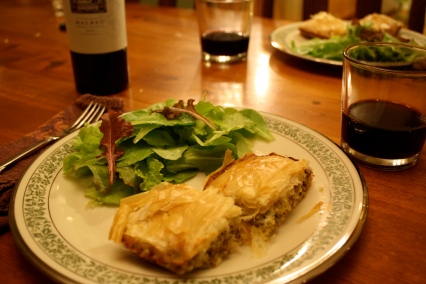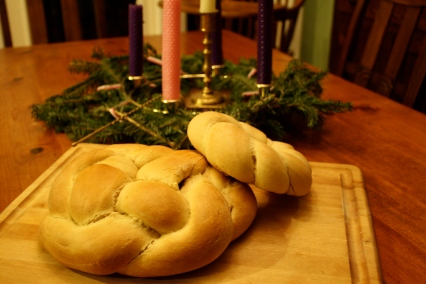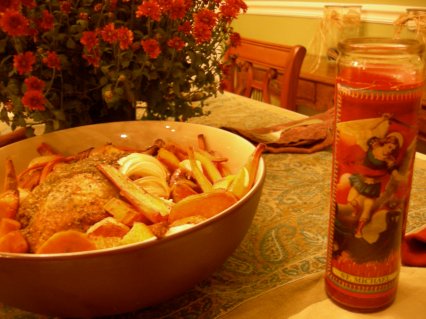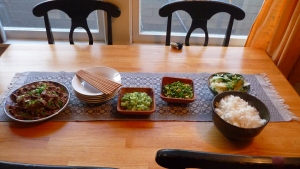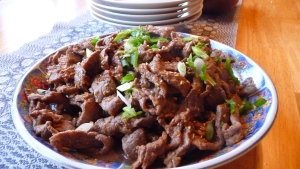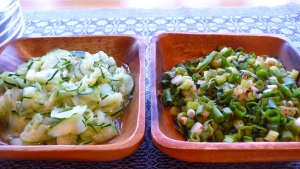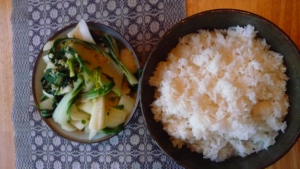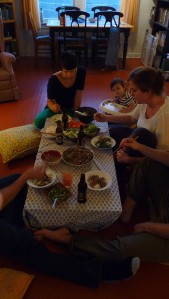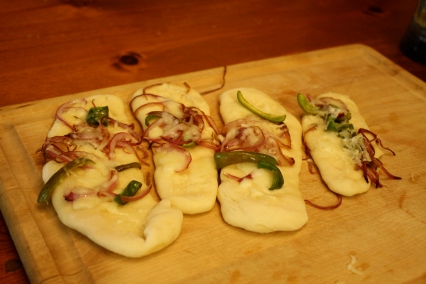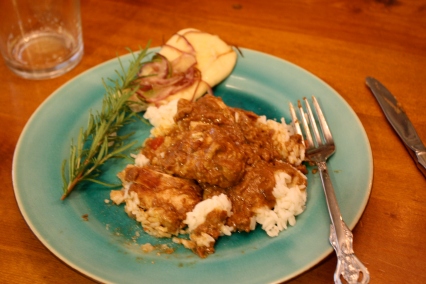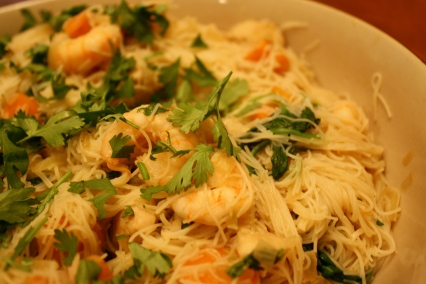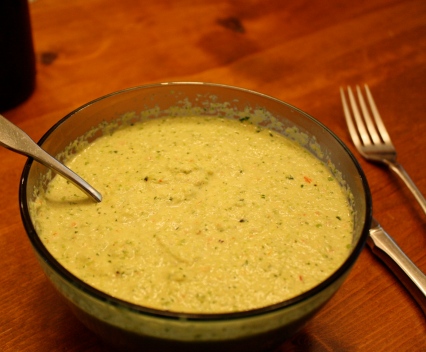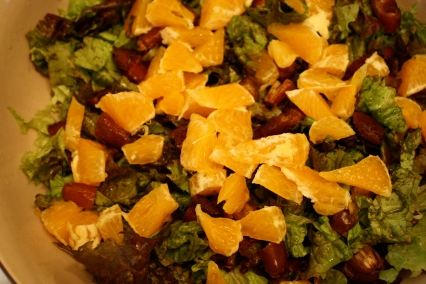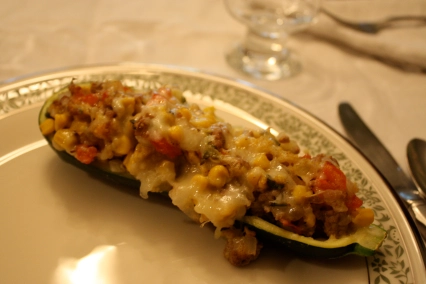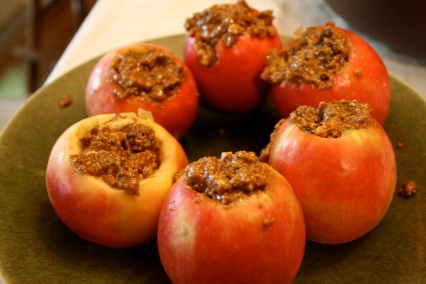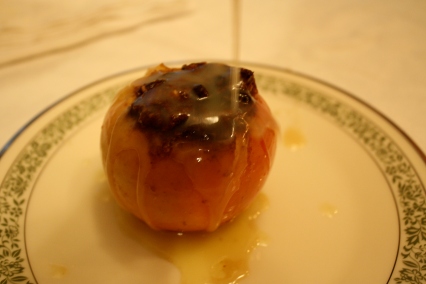Hello, dear readers! We are happy to join the ranks of Daniel, Haley, and Benjamin here at Feast! and celebrate the liturgical year with food, and lots of it. If you want to know who “we” are, read this to find out.

Last night (Aug. 18), we celebrated the feast of St. Helena of the True Cross. This feast is important for several reasons, personal and ecclesiastical. Firstly, Helen’s patroness, naturally, is this very Helena and it is always good to go all out in celebration of your patron or patroness to express the great gratitude for their special intercession in Heaven. Secondly, St. Helena was the mother of emperor Constantine the Great, who is largely responsible for altering the Roman empire, and subsequently the entire Western world, by aligning his imperial practices with Christian virtues. Most importantly, the Edict of Milan banned persecution because of religious affiliation – the great persecution of the early Christian Church ended and the relieved Church could start to mature.
St. Helena’s influence on Constantine cannot be understated; like St. Monica, mother of St. Augustine, Helena’s constant prayers for grace in Constantine’s life seem to have been answered. Constantine not only ruled according to Christian virtue, but on his death bed as he received the sacraments, he indicated a full redemption, saying, “I know what I have received,” indicating his full belief and surrender to Christ in face of those who doubted his faith.
But St. Helena is important in a way that helps us all as believers. She was in her late 70s when she decided to take a mission to the Holy Land in search of the True Cross, on which Christ was crucified. She prayed and searched around in the area of Calvary. One day, she smelled a sweet aroma coming from a hillside covered in a green herb. She told her attendants to begin digging here and unearthed three crosses, with inscriptions similar to those mentioned in the Gospels. In order to determine which cross was the True Cross, the priests in her retinue applied wood from each of the crosses to the sick and infirm. Upon touching the True Cross, all were healed.
The wood of the Cross is what we call a “sacramental.” Sacramentals are a little perplexing because they exhibit the multitude of ways in which grace is manifested, either in objects, prayers, acts, dress, or even relations, but are not actual grace-giving things. However, in this case, what is so powerful about Helena’s contribution is that her ardent belief in the sanctity of the Cross opens up a whole world in which things sing glory to God, not simply because they are created by Him, but because they are ordained to be holy so people may be holy. Sacramentals enrich our faith. The logic is that everything surrounding the sacraments ought to evoke piety in those sacraments, which is why there is such care about lighting candles, wearing the right vestments, blessing water, etc. Though they are not instruments of that effective grace which align us with Christ, nevertheless, these sacramentals deepen our piety because they rub shoulders with those special means of grace that Christ himself instilled.

Frankie's favorite game is finding Jesus
Now, back to the story of Helena’s discovery: the herb that directed her to this discovery was basil and it has traditionally become the main ingredient for celebrating this feast. We had a three course meal with LOADS of home-grown basil featured in each dish. The first one was a caprese salad with homegrown tomatoes and mozzarella. Second course was a pesto tortellini and watermelon-basil green salad. Finally, we had a variation on a mille feuille (mil foo-yay), which is a layered fruit and puff pastry dish. Ours had local peaches, strawberries, cottage cheese-honey-cinnamon spread, and, of course, basil.
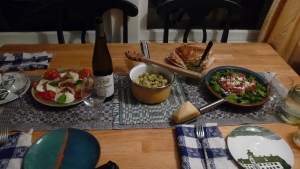
Recipes:
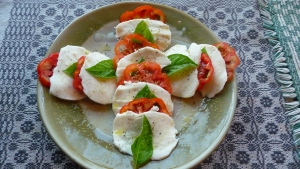
Caprese:
Slice three to four heirloom tomatoes, about 1/8″ thick.
Slice one ball of mozzarella to same thickness
Arrange prudently, alternating tomato, mozzarella and basil leaf (I prefer stacking the ingredients)
Drizzle with olive oil or balsamic reduction (simply simmer a cup of balsamic until it’s 1/2 cup), salt and pepper.
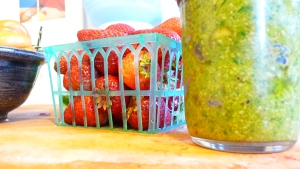
Basil Pesto:
2 c fresh picked and washed basil leaves
1/4c almonds
1/2 c parm
1/2 c olive oil
2 cloves garlic, minced
Instructions: Blend it up!
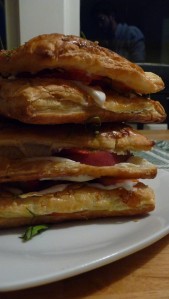
Mille Feuille:
1c cottage cheese
2T honey
1t cinnamon
1/4 c basil, chiffonade
ripe fruit (we used strawberries and peaches), sliced
4 puff pastry squares
turbinado sugar
1 egg
Prick the puff pastry squares all over so they don’t puff up. Coat with egg wash and a moderate sprinkling of turbinado sugar. Bake at or near 400F until golden brown (about 10min)
While baking, mix the cottage cheese, honey, and cinnamon.
Put a layer of cheese mixture onto puff pastry, spreading evenly. Arrange fruit slices then sprinkle basil on top. Place another sheet of pastry on top and sprinkle with basil. Repeat with remaining ingredients.
Prayer in honor of St. Helena: O Lord Jesus Christ, who unto blessed Helena didst reveal the place where Thy Cross lay hid: thus choosing her as the means to enrich Thy Church with that precious treasure: do Thou, at her intercession, grant that by the price of the Tree of Life we may attain unto the rewards of everlasting life. Who livest and reignest.
Hymn of St. Helena:
WHY cometh Zion’s daughter nigh,
With tears and prayers which pierce the sky?
Upon what sacred errand bent,
Where Jesus died, in love forspent?
2 Know this is Helen, child of grace,
A pilgrim to his holy place,
To find the Rood of her dear Lord
Whereon was merit won and stored.
3 What are these nails with blood embrowned?
What means this triple title found?
And lo, three beams of aspen wood,—
How will she know the Holy Rood?
4 These nails with Jesus’ Blood are stained,
This title Jesus’ rule proclaimed.
Yon sick one, rising whole and blessed,
Hath marked the True Cross from the rest.
5 From Zion’s Mount, from Hermon’s steep,
The hills their fiery vigil keep,
While Ida, by the wine-dark sea,
Proclaims the Finding of the Tree.
6 Then Helen let us sing today,
To Helen let us homage pay,
By Helen is the Cross new-brought,
For Helen’s children mercy-fraught.
7 All honor, laud, and glory be,
O Jesus, Virgin-born, to thee;
Whom with the Father we adore,
And Holy Ghost, for evermore. Amen.



